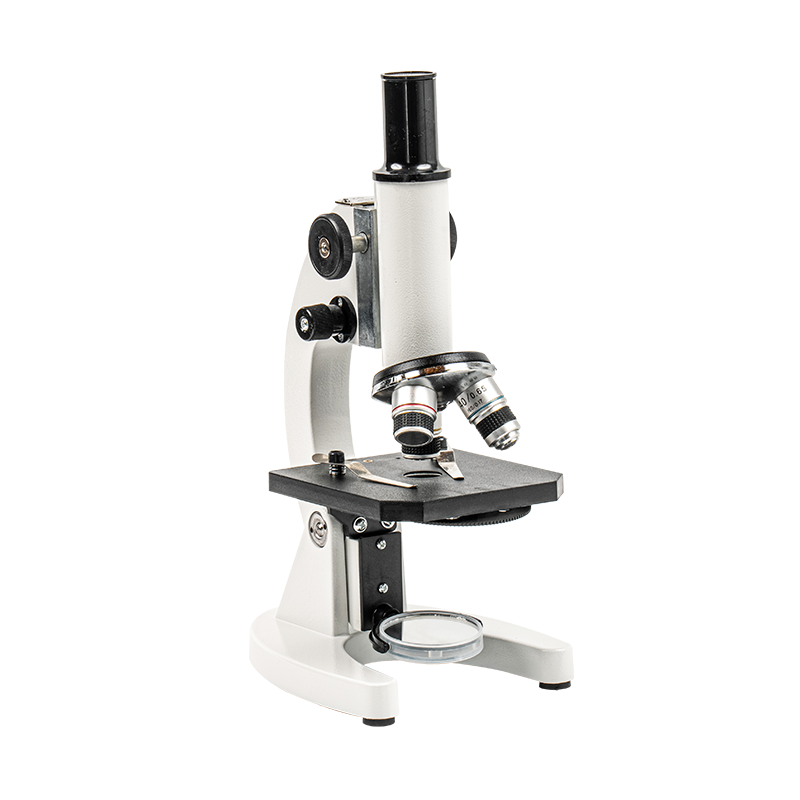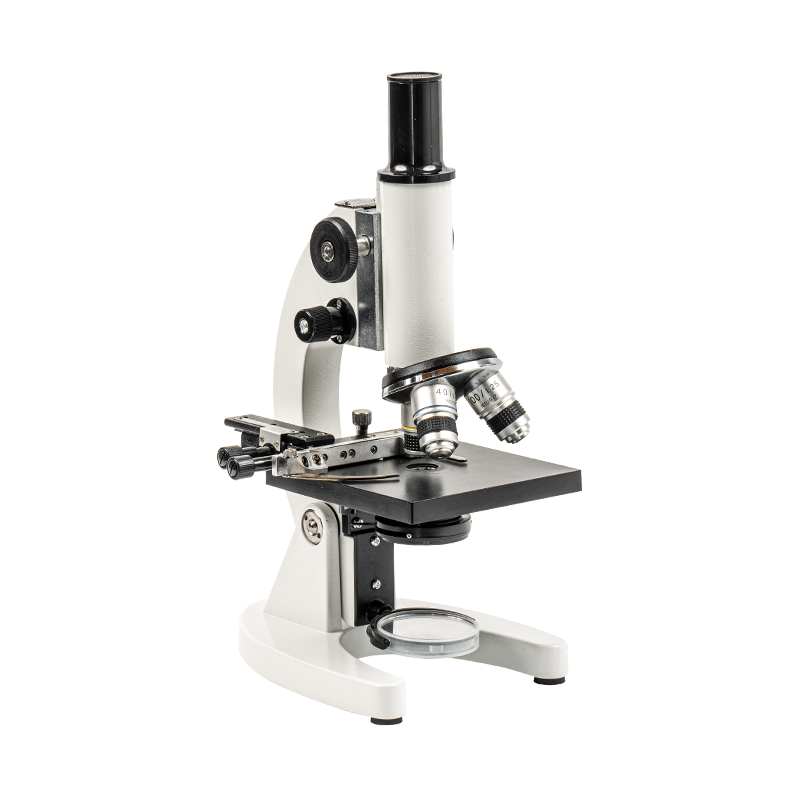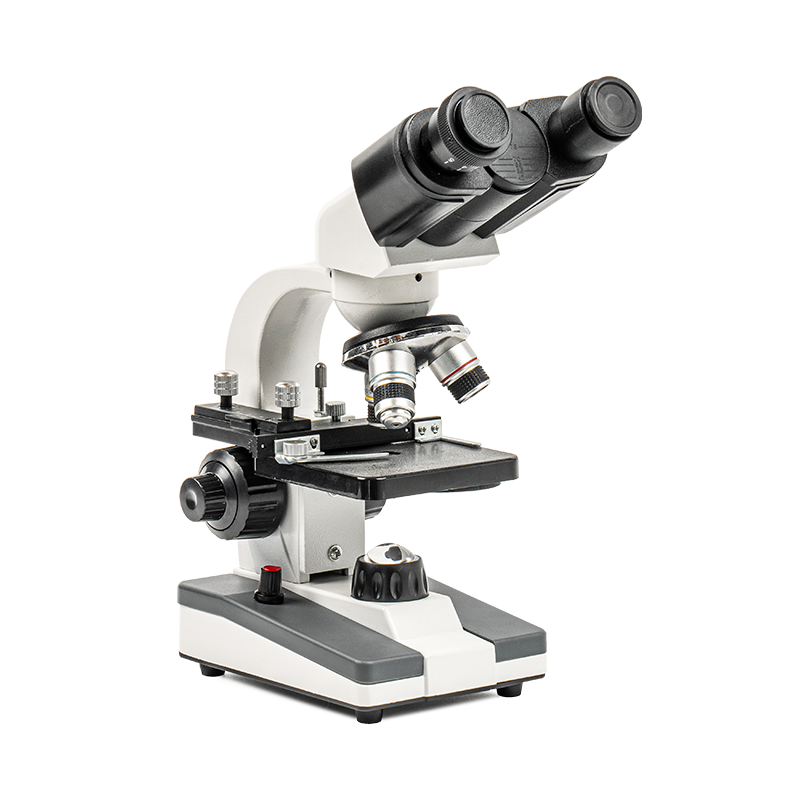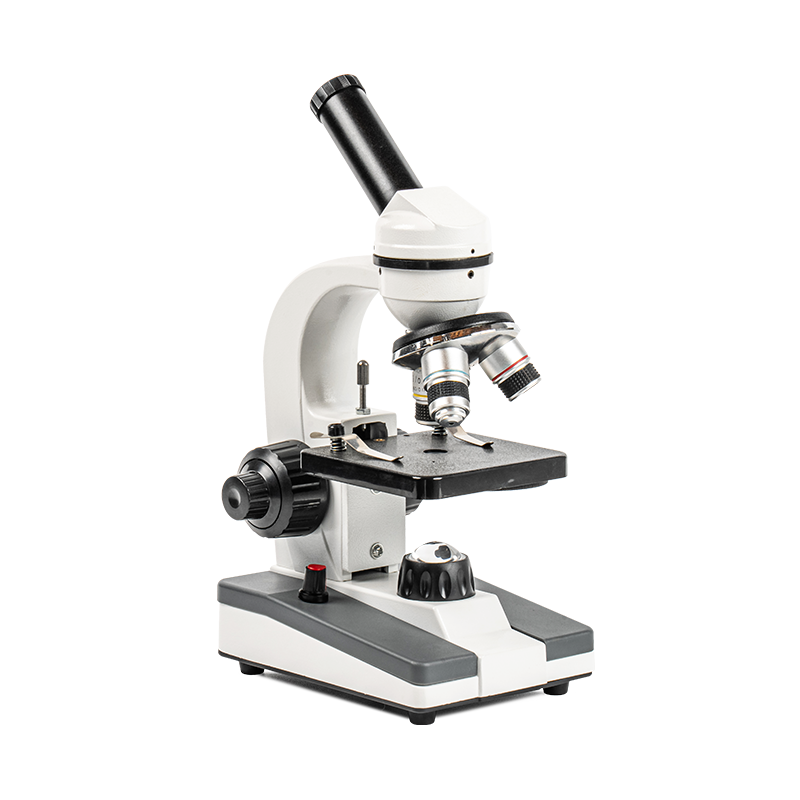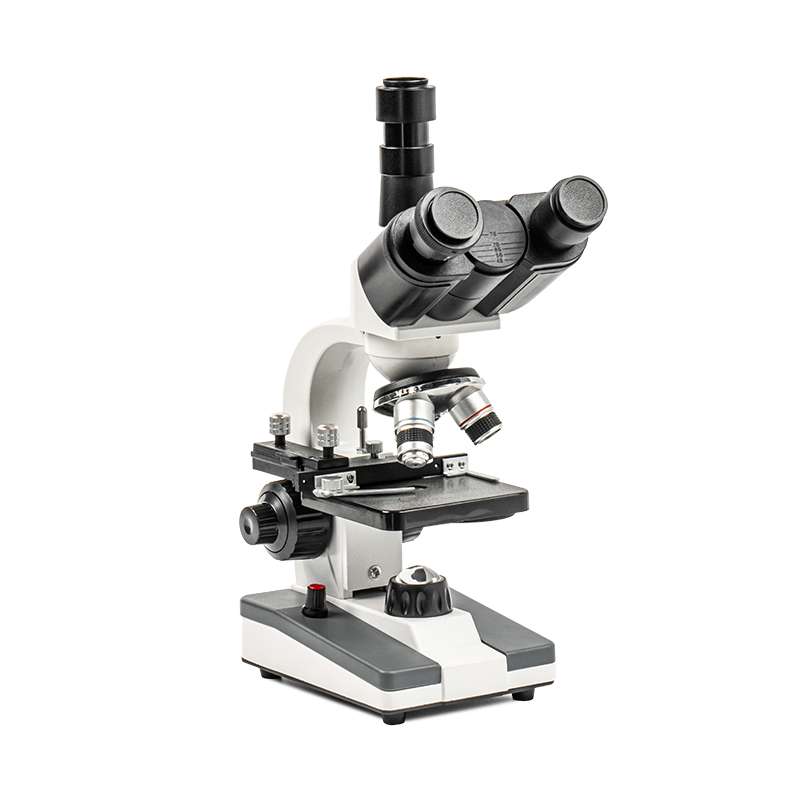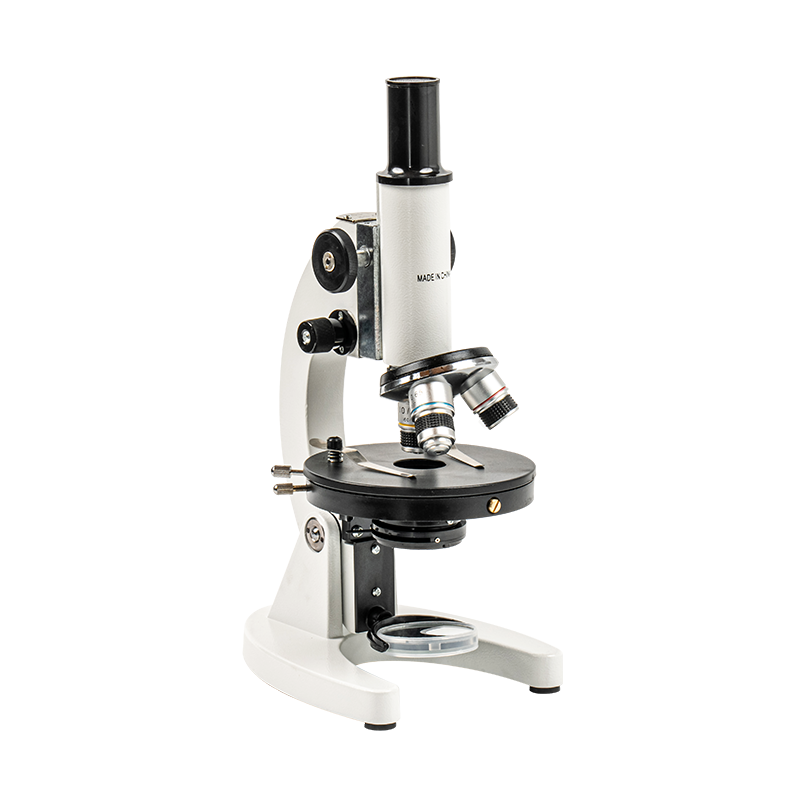In modern education, scientific experiments are an important part of students' learning process, especially in biology, chemistry and other courses. Microscopes are essential tools to help students understand the microscopic world. In recent years, monocular microscopes, as an economical and practical experimental equipment, have been favored by more and more schools and educational institutions.
Monocular microscopes have become the preferred tool for students to explore the microscopic world because of their simple structure, intuitive functions and affordable price. Compared with binocular microscopes, monocular microscopes are more concise in design, especially suitable for beginners and young students. Its operation is very intuitive, and students can easily master the basic skills of adjusting focal length and magnification, and can quickly enter the observation state without complicated adjustments. For those students who are just starting to use microscopes, monocular microscopes are very friendly entry tools.
Through monocular microscopes, students can directly observe the microscopic world that cannot be seen by the naked eye, such as microorganisms, cell structures, and plant tissues. This hands-on experience can greatly deepen students' understanding of scientific knowledge and stimulate their interest in exploring more unknowns.
Monocular microscopes can also help students develop meticulous observation skills. In the process of adjusting the focal length, selecting the appropriate magnification, and operating the slide, students learned how to complete the task patiently and attentively, and exercised their experimental skills and hands-on ability. It is precisely because of these advantages that the monocular microscope has become an important tool for students to explore the microscopic world and understand natural phenomena.
One of the greatest charms of the monocular microscope is that it can greatly stimulate students' curiosity and spirit of exploration. When students see the microscopic world that cannot be detected by the naked eye through the microscope, they often have a strong interest in cell structure, microbial morphology, chemical crystals, etc. This direct observation experience not only makes students have a strong interest in science, but also prompts them to take the initiative to explore more scientific phenomena and problems.
The use of a monocular microscope can significantly improve students' hands-on ability. In the actual operation process, students must not only learn how to adjust the focal length correctly, but also master the operation skills such as how to choose the appropriate magnification, how to place samples, and how to observe carefully. These operation steps require students to have meticulous observation and patience, and also cultivate their ability to solve problems in actual experiments.
Through these specific practical operations, students' hands-on ability has been significantly improved. Whether observing the cells of plant leaves or checking the movement of microorganisms in water, students learn how to adjust the equipment accurately and how to improve the accuracy of observation. This is not only a cultivation of their hands-on ability, but also a training of their scientific thinking and problem-solving ability. Through repeated operations, students can not only master experimental skills, but also cultivate a more meticulous and rigorous scientific attitude.
Monocular microscopes not only help students understand the microscopic world, but also provide early experimental experience for some students who are interested in scientific research. Through monocular microscopes, students can be exposed to the methods and processes of scientific research in advance, inspiring them to explore deeper scientific problems. For some potential students, these early experimental experiences may become the source of motivation for them to choose the path of scientific research in the future.

 English
English Español
Español عربى
عربى 中文简体
中文简体
